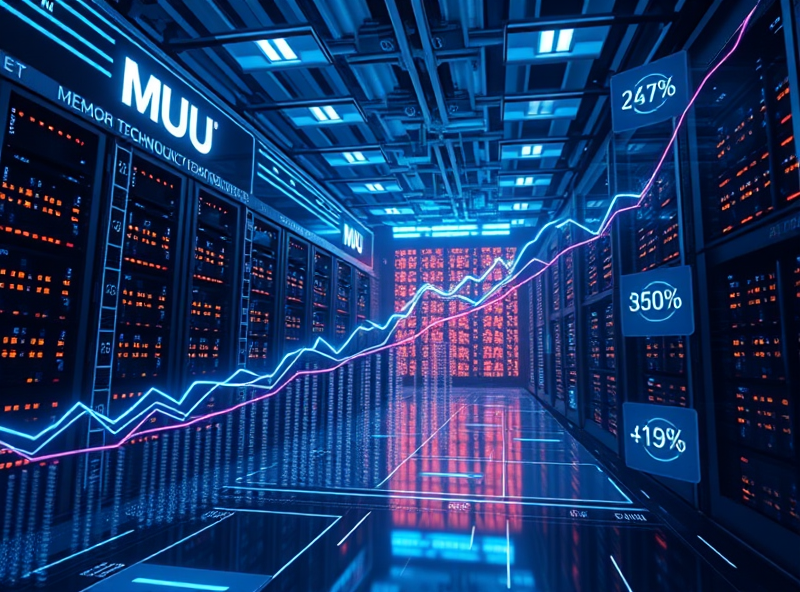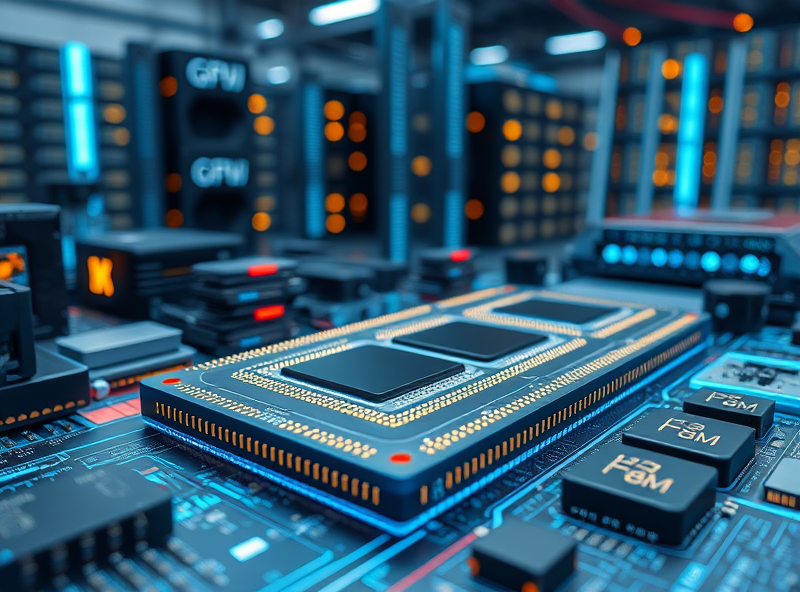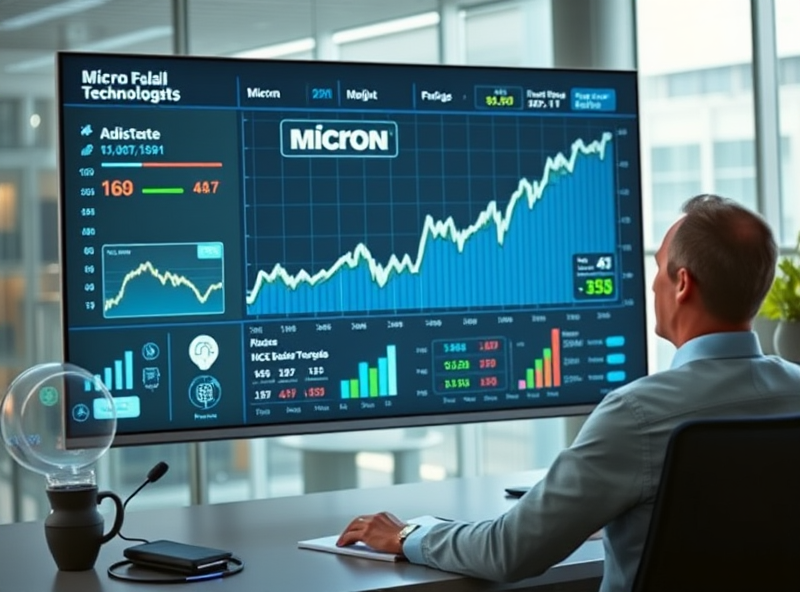
Micron and the Memory Chip Supercycle: 2025 Outlook
HBM Surge Driving the Memory Chip Supercycle

High Bandwidth Memory (HBM) is rapidly becoming the cornerstone of the next memory chip supercycle, especially as demand for AI and high-performance computing continues to skyrocket. Unlike traditional DRAM, HBM offers significantly higher data transfer speeds and energy efficiency, making it a critical component in AI accelerators, GPUs, and data center infrastructure.
The surge in HBM demand is largely driven by the explosive growth of generative AI models like ChatGPT and large language models (LLMs), which require immense memory bandwidth to function efficiently. As a result, memory manufacturers like Micron, SK Hynix, and Samsung are ramping up their HBM production capacities. Micron, in particular, is positioning itself as a key player in the HBM3E market, with plans to begin mass production in 2024 and full-scale deployment in 2025.
This trend is expected to create a supply-demand imbalance, pushing memory prices upward and triggering a supercycle—a period of prolonged growth and profitability for memory chip makers. For investors and tech enthusiasts, this signals a strategic opportunity to monitor companies deeply involved in HBM production.
For consumers and enterprises alike, the proliferation of HBM means faster, more efficient AI applications, from real-time language translation to autonomous driving and advanced data analytics. Staying informed about these developments can help businesses plan infrastructure upgrades and stay competitive in an AI-driven world.
For a deeper dive into HBM technology and its market impact, you can refer to this article by Semiconductor Engineering: https://semiengineering.com/hbm-ramps-up/
AI Boom Fueling Demand Across Data Centers

The rapid acceleration of artificial intelligence (AI) technologies is creating an unprecedented surge in demand for high-performance memory chips, particularly across hyperscale data centers. As AI models grow more complex—like OpenAI’s GPT-4 or Google’s Gemini—they require exponentially more data processing and memory bandwidth. This is where companies like Micron come into play, supplying advanced memory solutions such as HBM (High Bandwidth Memory) and DDR5 to meet these escalating requirements.
AI workloads, especially in training large language models and real-time inference, rely heavily on fast, energy-efficient memory. Data centers are now being re-architected to support AI-first infrastructure, which includes GPUs and memory chips working in tandem. This shift is fueling what analysts call a ‘memory chip supercycle’—a period of sustained demand and pricing power for memory manufacturers.
Micron, one of the global leaders in memory and storage solutions, is well-positioned to benefit from this trend. The company has already begun mass production of HBM3E, a next-generation memory technology optimized for AI workloads. According to a recent report by McKinsey, the AI hardware market is expected to exceed $300 billion by 2027, with memory chips playing a pivotal role in this growth.
For tech investors and professionals, understanding this trend is crucial. Not only does it signal potential investment opportunities, but it also highlights the need for businesses to adapt their IT infrastructure to remain competitive in an AI-driven world.
If you’re interested in the broader implications of AI on hardware demand, you can explore this detailed report from McKinsey: https://www.mckinsey.com/industries/semiconductors/our-insights/the-ai-hardware-opportunity
Stock Performance Reflecting Tech Sector Optimism

As we approach 2025, Micron Technology (MU) is emerging as a key player in the anticipated memory chip supercycle, and its stock performance is already reflecting broader optimism in the tech sector. Over the past year, Micron’s shares have surged significantly, buoyed by rising demand for high-bandwidth memory (HBM) chips, AI-driven data centers, and a rebound in global semiconductor demand.
The optimism isn’t just speculative—it’s rooted in strong fundamentals. Micron has reported improving margins, reduced inventory levels, and increased capital expenditure focused on advanced memory technologies. These indicators suggest the company is well-positioned to benefit from structural growth trends in AI, 5G, and cloud computing.
Investors are particularly excited about Micron’s role in supplying memory for AI accelerators, such as those used in NVIDIA’s GPUs. As AI workloads require exponentially more memory bandwidth, HBM and DDR5 demand is set to grow, directly benefiting Micron. This aligns with forecasts from industry analysts who predict a multi-year upcycle in memory pricing and volume.
For long-term investors, this presents a valuable opportunity. Historically, memory chip cycles have been volatile, but the current setup—driven by secular demand rather than short-term inventory cycles—points to a more sustainable growth trajectory. As always, it’s wise to diversify and monitor macroeconomic factors, but Micron’s current trajectory offers a compelling case for inclusion in a tech-focused portfolio.
For more on Micron’s recent earnings and strategic outlook, you can refer to their official investor relations page: https://investors.micron.com
Analyst Sentiment Split: A Look at the Risks Ahead

As we approach 2025, the memory chip industry—particularly companies like Micron—is under the spotlight due to a potential supercycle driven by high-bandwidth memory (HBM), AI, and data center demand. However, despite the optimism, analysts remain divided on the outlook, and it’s important to understand why.
Some analysts are bullish, pointing to the exponential growth in AI workloads, which require faster and more efficient memory solutions. Micron’s investments in HBM and DDR5 technologies position it well to capitalize on this trend. According to recent earnings calls, Micron expects strong demand recovery in 2025, particularly from hyperscalers and AI training platforms.
On the other hand, more cautious analysts highlight several risks. First, the cyclical nature of the semiconductor industry means that overcapacity or a sudden drop in demand could lead to sharp price declines. Second, geopolitical tensions—especially around U.S.-China tech restrictions—could impact Micron’s access to key markets or supply chains. Lastly, the rapid pace of innovation means that competitors like Samsung and SK Hynix could outpace Micron in technology or pricing.
For investors and tech enthusiasts, the key takeaway is to monitor not just demand trends, but also supply-side dynamics and global policy developments. Staying informed on these factors can help you make smarter decisions, whether you’re investing in the sector or simply following its impact on broader tech innovation.
For a deeper dive into Micron’s latest earnings and strategic outlook, you can refer to their official investor relations page: https://investors.micron.com







